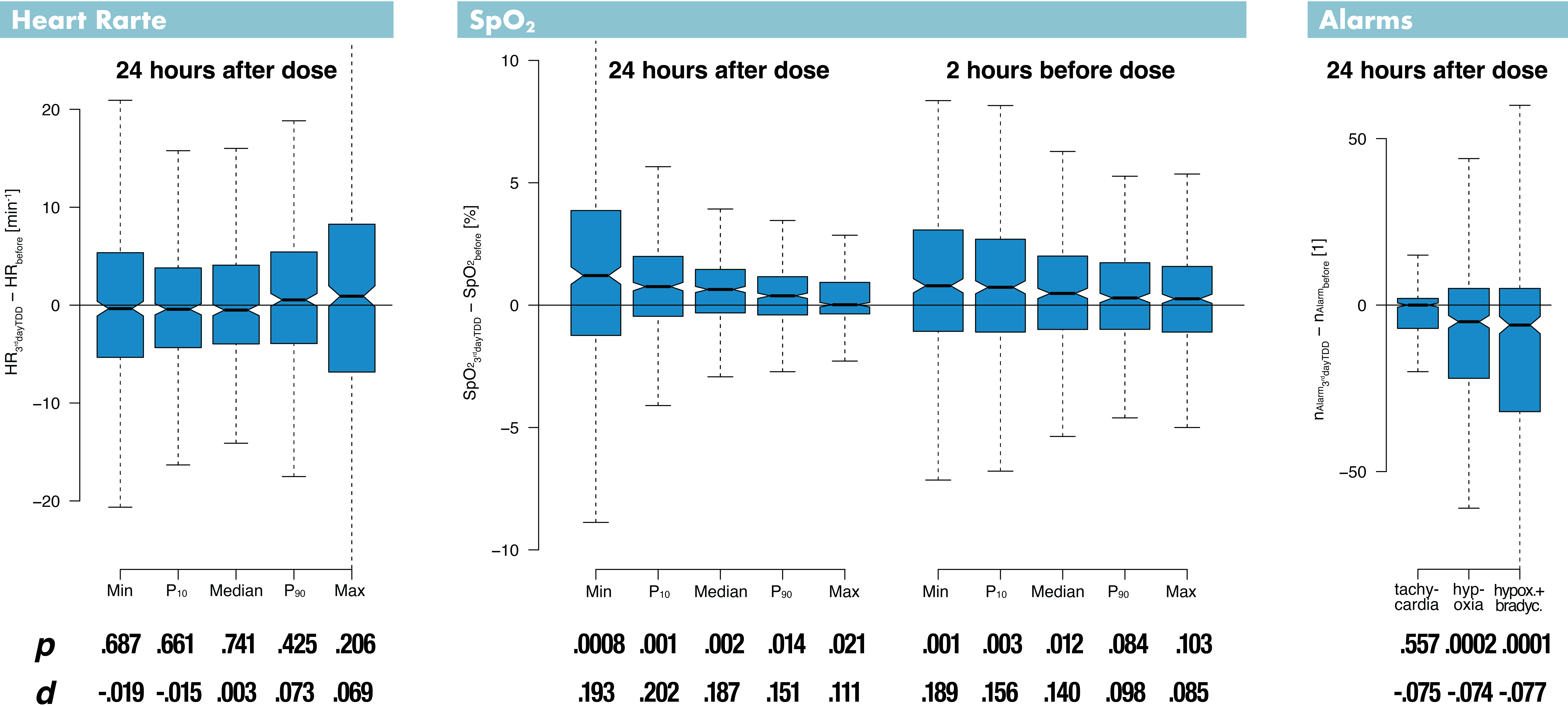Neo-Perinatal Health Care Delivery: Practices and Procedures 2
Session: Neo-Perinatal Health Care Delivery: Practices and Procedures 2
479 - Switching form Once-daily to Twice-daily Dosing of Caffeine Does Not Reduce Tachykardia and Only Has Small Effects on Oxygenation: Analysis of Vital Signs Monitoring
Friday, April 25, 2025
5:30pm - 7:45pm HST
Publication Number: 479.6959
Rudolf Ascherl, University of Leipzig, Leipzig, Sachsen, Germany; Julia Koppitz, University of Leipzig, Leipzig, Sachsen, Germany; Ulrich H.. Thome, Universitätsklinikum Leipzig, Leipzig, Sachsen, Germany

Rudolf Ascherl, MD (he/him/his)
Neonatologist
University of Leipzig
Leipzig, Sachsen, Germany
Presenting Author(s)
Background: The long half-life of caffeine allows for once-daily dosing (ODD) as a prophylaxis for apnea of prematurity. In case of hypoxia before the next dose or tachycardia a twice-daily dosing (TDD) regimen has been suggested but evidence for this is sparse.
Objective: Does splitting a once-daily caffeine dose into twice-daily doses reduce hypoxia and tachykardia?
Design/Methods: Data were extracted from digital patient records of all patients admitted to the NICU of our tertiary hospital within the first day of life from 2008 to 2024. Switches from ODD to TDD were identified algorithmically. We considered pertinent characteristics such as P₁₀, P₉₀, median, minimum, and maximum of SpO2 and heart rate (HR) and the numbers of tachycardia and hypoxia alarms. These characteristics were compared on the day before the change from ODD to TDD versus the third day after the change using Wilcoxon’s rank sum test and Cohen's d.
Results: Data from 106362 treatment days of 3671 patients were available for analysis. In total 506 switches were identified. TDD doses were 6.9 [4.5,10] mg/KG/d and 12 [11.8,12.5] hours apart. Heart rate and tachykardia alarms were not significantly different. SpO₂ was analysed over two time ranges: 24 h after the first dose of the day nominal SpO₂ was significantly higher, but only regarding P₁₀ an effect size that could be considered as a small effect could be demonstrated; alarms were significantly lower with minimal effect sizes. At the other time range, 2 h before the dose, some of the metrics returned insiginificant statistical tests but effect sizes were minimal.
Conclusion(s): Splitting caffeine doses improves hypoxia: While statistically significant, the effect sizes are generally below common thresholds (e. g. d > .2 to be considered a “small” effect). Tachycardia was not statistically different. Switching to TDD does not seem to bring clinically meaningful changes and could thus be forgone. Power and effect sizes should be considered as data sets become larger.
Comparison of Vital Signs and Vital Sign Alarms After Switching to a Twice-daily Dosing of Caffeine
 Boxplots show the difference of the vital signs and number of alarms: Values before the switch were subtracted from the respective values on the 3ʳᵈ day after the switch. Below are results from Wilcoxon's rank sum tests and Cohen's d for effect sizes.
Boxplots show the difference of the vital signs and number of alarms: Values before the switch were subtracted from the respective values on the 3ʳᵈ day after the switch. Below are results from Wilcoxon's rank sum tests and Cohen's d for effect sizes.
